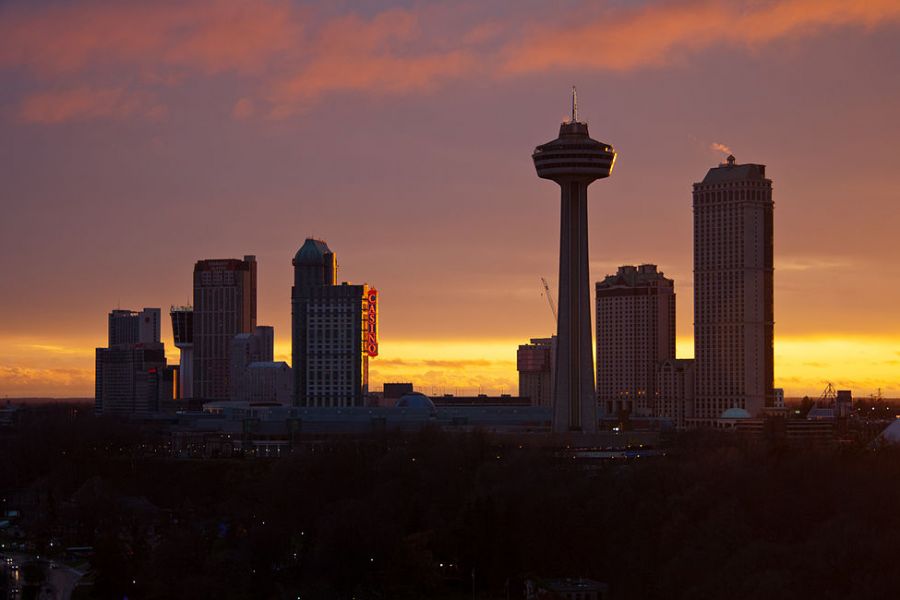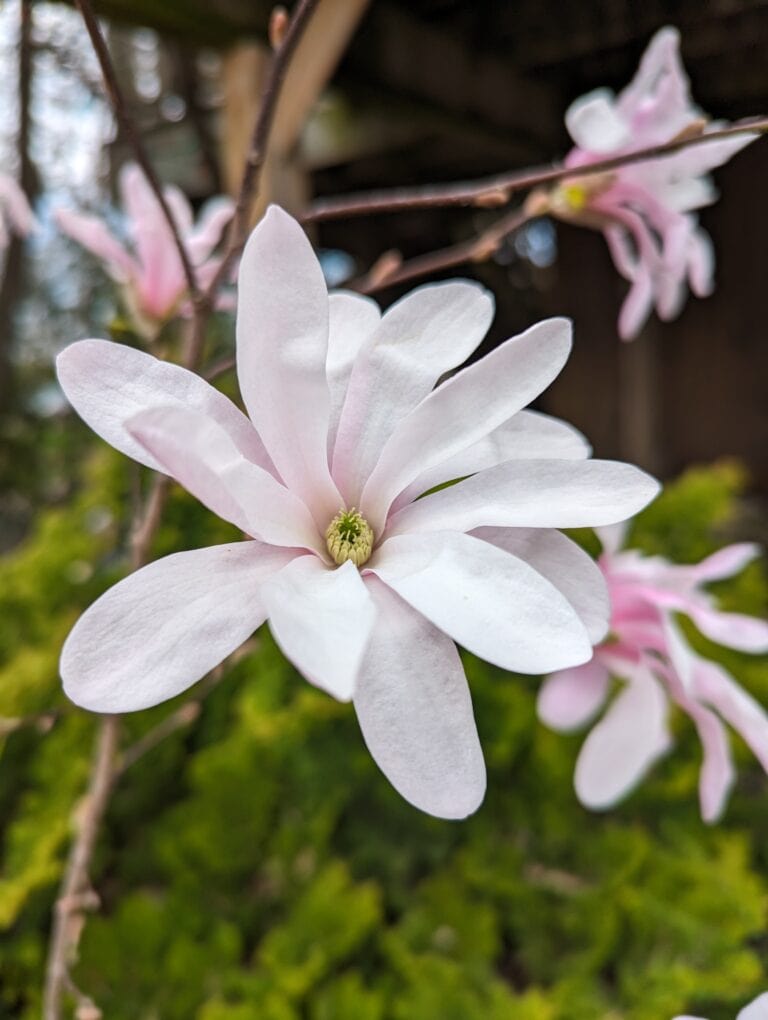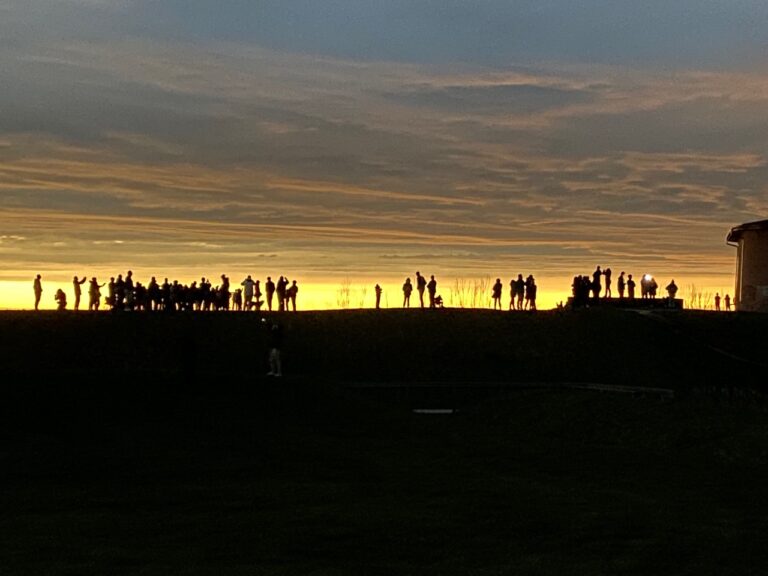The sound of water thundering over a precipice has created a fascination for people over the ages and we in the Niagara Region are fortunate to live near one of the most powerful waterfalls in the world – Niagara Falls.
The creation of these falls goes back about 18,000 years, when the entire area was covered by the Wisconsin Glacier, which was two to three kilometres thick. That’s how the entire Great Lakes Basin was created.
Then some 12,500 years ago the glacier started to recede and the basin filled with melt-water. This was “fossil water,” which is considered a non-renewable water source. It is estimated that only five per cent of the Great Lakes water comes from rain and snow melt.
All this water filling the Great Lakes Basin needed an outlet to reach the Atlantic Ocean. At first there were five “spillways” from Lake Erie to Lake Ontario, however, over time only one spillway remained and that is what we see today.
In geological time standards, the Niagara River is consider fairly young but the Niagara Escarpment is much older. As the glacier moved south, grinding up stone and dirt, its weight pressed down on the land and created layers of sediment called dolostone (or shale).
This is evident when you look across the river at the banks on the American side. The sediment, though, slowly eroded as it was no match for the mighty power of water and ice of the new river.
The original location of Niagara Falls is where the Queenston-Lewiston Bridge is today. It took almost 12,300 years of erosion for the falls to gradually move south 11.3 kilometres to where it is now. However, this transition was not without some drama.
Around 6,000 years ago, the falls had reached a point where they ran into an old riverbed, one that had been buried by the glacial action. This particular riverbed had gone through the St. Davids area and continued to an old lake between Two Mile Creek and Four Mile Creek.
The meeting of the Niagara Falls with the old riverbed was a violent event that experts suggest lasted almost a week. The waters would have churned up mud, stone and glacial debris before the falls took a 90-degree turn.
The falls continued on their path south toward Lake Erie. What remains of this incident is the Whirlpool Rapids, known today to have the largest standing waves in North America.
About 500 years ago, the Niagara River flowing north toward the falls encountered an obstacle that caused it to divide in two. This created an island and two more falls, the Bridal Veil and the American Falls.
The island was first named Iris Island, but later changed to Goat Island after John Stedmand lost his entire goat herd there during the winter of 1780.
As the falls continue to claw their way south, experts believe in about 2,000 years the American Falls and the Bridal Veil Falls will dry up. Eventually, in about 50,000 years, Niagara Falls will reach Lake Erie and experts say there will be no more Niagara Falls. But the Niagara River will still exist and probably be just as treacherous as it is today.
The river was actually first named Niagara Strait on the earliest maps made by French explorers. A strait is defined as a body of water connecting two larger bodies of water.
For example, we have the Straits of Gibraltar, which connect the Mediterranean Sea to the Atlantic Ocean, and the Straits of Magellan connecting the Atlantic Ocean to the Pacific Ocean. It is not known just when the name changed to Niagara River, but it was found on later maps created by British cartographers. Note: the Niagara River is one of the few rivers in North America that flows south to north.
The meaning of the name Niagara itself has been quite the controversy. We all probably have heard of “Thundering Waters,” “The Neck” or “the Thunderer” but just what does Niagara mean and where did it come from?
I turned once more to my friend Ron Dale, an expert of the history of our region. Here is how he explained it to me.
The Jesuits made detailed accounts of their visits with the Neutral villages on the west side of the Niagara River. In 1626-27, Father Joseph Roche Daillon resided in one of the Neutral villages. He described the Neutral Confederacy as being made up of several nations. The local Neutral group was called the Onguiaahra, meaning “Near the Big Waters,” possibly the Niagara River.
Since the Neutrals were also of Iroquoians lineage, the Onondaga (Mohawk) word “onyara” was very similar in sound and meaning as Onguiaahra. Then a point speaker of the Seneca language in the 19th century confused the issue when he stated the name Niagara referred to the “Thunderer,” a spirit that lived in the cave behind the falls.
As Dale said, the Thunderer is quite a whimsical and romantic story, but “near the big waters” is more likely the actual meaning of Niagara. This anglicized word from the original Neutral word appears on maps as early as 1641.
It must be noted that Daillon did not write about actually seeing the falls. In fact the first written account by a European, Father Louis Hennepin, was in 1678. He wrote about the size of the falls, the noise of the water and even drew several pictures. Years later his account was recognized as being quite exaggerated.
Although Niagara Falls is the largest waterfall in North America there are nearly 500 taller waterfalls around the world. What makes Niagara Falls unique is the amount of water that flows over the falls; every single day – 3,160 tons per second.
Niagara Falls has fascinated many who have come from around the world to see, hear and feel the magnificence of this natural wonder. And then we have those daredevils who want to challenge the falls.
NEXT: The daredevils who challenged the falls.
More Niagara’s History Unveiled articles about the past of Niagara-on-the-Lake are available at: www.niagaranow.com











